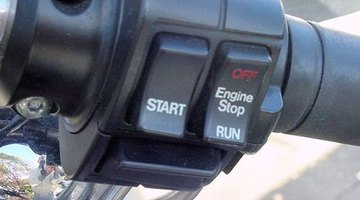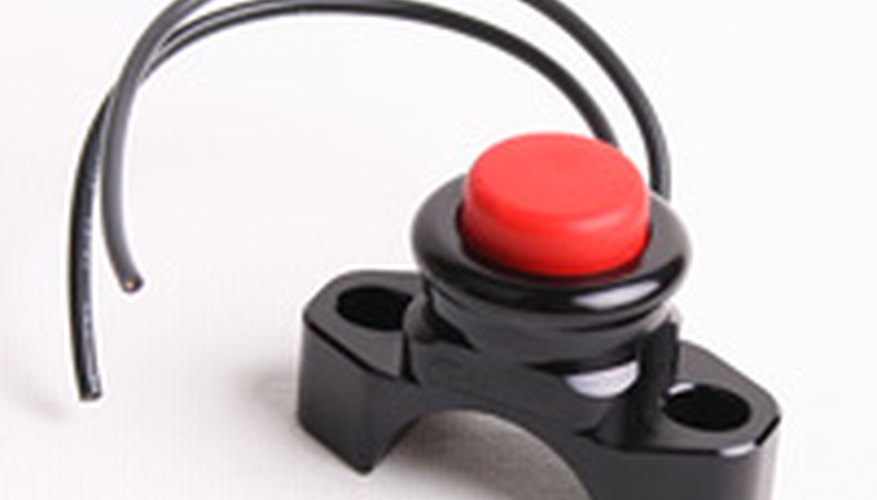A kill switch is designed to interfere with an engine's combustion process, shutting it down in the quickest way possible. In larger engines this is useful in accidents or other dangerous scenarios when a motor, such as that on a bike, needs to be turned off immediately. On smaller engines like lawnmowers or generators, a kill switch is used to stop the motor to avoid damage to its machinery, damage to appliances or collisions. While some small engines come with kill switches already installed (common in motorcycles), others do not but can be equipped with the device by buying and wiring in the switch.
A kill switch can stop an engine in several different ways. The most common way is to interrupt a circuit that brings electricity to a spark plug. With the spark plug no longer active, the engine's pistons cannot function and the entire motor grinds to a stop. This approach, while effective, can cause unfortunate side effects such as backfiring, where the remaining gasoline in the engine explodes.
For this reason, more advanced kill switches include sensors that detect the number of engine revolutions or the spark ratio and devise a way to time the shutdown in such a way that it does not interfere with the workings of the engine. Therefore, the machine still shuts down as soon as possible but with minimal damage.
Process of Kill Switch Mechanics

A kill switch is wired into the circuitry that controls the small engine. Normally, wires connect from the machine's battery or energy source to the engine's spark plugs, often via some sort of ignition system. On some light-combustible engines the ignition is separate from the kill switch, and the motor can be started by turning a key or a crank with the kill switch being an emergency-only option.
- A kill switch is wired into the circuitry that controls the small engine.
- On some light-combustible engines the ignition is separate from the kill switch, and the motor can be started by turning a key or a crank with the kill switch being an emergency-only option.
Other engines use the kill switch as an integral part of the system. When closed (off), the switch allows the circuit to be completed and the spark plugs to function correctly, causing combustion and turning the engine. When the switch is thrown open, the circuit cannot be completed and the engine shuts down. This can be seen in an electric push mower, which often comes with a latch or handle the user must keep activated for the lawnmower to continue running--an important component of this lawnmower system in the kill switch.
Variants of Kill Switches
There are several recreational uses for kill switches, including the installation of a push-button ignition on a car. But with small engines the switch is usually for protection and emergencies. You can equip a kill switch manually on these type of engines, but most kill switch designs and kits are made for larger vehicles and motors.
- There are several recreational uses for kill switches, including the installation of a push-button ignition on a car.
- You can equip a kill switch manually on these type of engines, but most kill switch designs and kits are made for larger vehicles and motors.
Advanced kill switches work by using an ignition timing delay and are highly complicated devices, integrated with the parts of the engine. These type of switches cannot usually be installed and must be bought with the device.
